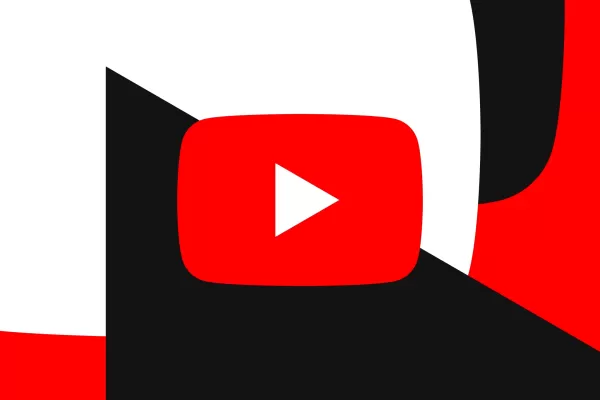Creative Content and AI Training: A Practical Guide

Artificial intelligence is transforming our world at a breakneck pace, touching everything from our daily lives to the cutting edges of science and art. As AI continues to evolve rapidly, it's crucial to consider how we can foster a balanced approach to using creative content in training AI models. This isn't just about legalities; it's about shaping the future of AI innovation and human creativity.
Every new technology that helps create or share knowledge and art—from the printing press to the internet and cable TV—has sparked debates about how to generate and distribute value. When it comes to AI, developers can take several steps to support creative industries and build a thriving AI ecosystem that benefits everyone. So, what strategies should we consider for AI model outputs, training processes, and the new ways AI can create shared value?
Evaluating AI Outputs
Whether you're writing with a pen, a typewriter, or AI, or creating art with a paintbrush, computer graphics, or AI, the key question is whether the new work infringes on the copyright of an existing one. This can be tricky, depending on factors like how similar the new work is to the old one, the nature of both works, and whether the new one competes in the same market as the original. Tools like output filters can help prevent outputs that are too similar, even as the models learn to make more nuanced judgments about these factors.
Provenance information, such as watermarks or metadata, can also help reduce the risk of misleading people about who created a piece of content. For instance, Google has led the way with its SynthID tool and is part of the steering committee for the Coalition for Content Provenance and Authenticity (C2PA). These efforts can help consumers make better-informed decisions about the content they encounter.
Training AI Models Responsibly
Training foundational AI models on content from the open web is considered a transformative fair use under U.S. copyright law, and many other countries have similar text and data mining exceptions that encourage new uses of information. However, adopting good practices can help build acceptance for new AI uses of existing content.
It's important to acquire content responsibly and legally, such as by allowing websites to opt out of having their content used for AI training. Existing industry standards for web crawling are a key way to do this. These standards are straightforward and scalable, building on well-established machine-readable robot.txt protocols that are widely used across the web to control how content is accessed by web crawlers. Nowadays, thousands of web publishers are also using the Google-Extended protocol and similar AI-specific protocols offered by other companies. AI developers should be open to evolving these standards as the ecosystem grows and should take reasonable steps to avoid improperly training general-purpose AI models in ways that bypass these standards or similar technical measures like paywalls.
When it comes to avoiding the use of individuals' voices and likenesses, legislative frameworks can build on existing "notice-and-removal" systems for copyright, including safeguards to prevent abuse. New tools can also help creators tap into AI's creative potential while maintaining control over their voice and likeness.
Sharing Value, Expanding Opportunities
AI has the potential to benefit everyone, and collaboration between AI developers and content publishers can expand the market and generate new income for creative industries.
AI developers are looking to share the value of outputs by driving related traffic to content providers. The ecosystem is also working together to find new ways to create value from emerging AI applications. For example, there may be opportunities for commercial partnerships when AI services "ground" responses on facts from websites.
AI developers and content publishers are also collaborating on new content agreements for using specialized or non-public data for training purposes. AI developers are increasingly learning how to assess the usefulness of individual content for different AI applications. For our part, Google has already entered into agreements with several publishers for broad data rights and continues to explore new opportunities.
AI developers are actively working with media and creative industries to design new generative AI tools that add value to these industries. For example, Pinpoint, an AI tool for journalists, helps reporters search through text, audio, image, and video files to spot patterns in data, identify new angles, or find a quote in a video or audio file.
AI is a shared opportunity with the potential to expand the realms of science, commerce, and creativity. We're committed to working with all stakeholders in the ecosystem to create a shared framework where both creators' rights and innovation can thrive.
Related article
 YouTube Integrates Veo 3 AI Video Tool Directly Into Shorts Platform
YouTube Shorts to Feature Veo 3 AI Video Model This SummerYouTube CEO Neal Mohan revealed during his Cannes Lions keynote that the platform's cutting-edge Veo 3 AI video generation technology will debut on YouTube Shorts later this summer. This follo
YouTube Integrates Veo 3 AI Video Tool Directly Into Shorts Platform
YouTube Shorts to Feature Veo 3 AI Video Model This SummerYouTube CEO Neal Mohan revealed during his Cannes Lions keynote that the platform's cutting-edge Veo 3 AI video generation technology will debut on YouTube Shorts later this summer. This follo
 Google Cloud Powers Breakthroughs in Scientific Research and Discovery
The digital revolution is transforming scientific methodologies through unprecedented computational capabilities. Cutting-edge technologies now augment both theoretical frameworks and laboratory experiments, propelling breakthroughs across discipline
Google Cloud Powers Breakthroughs in Scientific Research and Discovery
The digital revolution is transforming scientific methodologies through unprecedented computational capabilities. Cutting-edge technologies now augment both theoretical frameworks and laboratory experiments, propelling breakthroughs across discipline
 Elon Musk's Grok AI Seeks Owner's Input Before Tackling Complex Queries
The recently released Grok AI—promoted by Elon Musk as a "maximally truth-seeking" system—has drawn attention for its tendency to consult Musk's public statements before responding to politically sensitive topics. Observers note that when addressing
Comments (21)
0/200
Elon Musk's Grok AI Seeks Owner's Input Before Tackling Complex Queries
The recently released Grok AI—promoted by Elon Musk as a "maximally truth-seeking" system—has drawn attention for its tendency to consult Musk's public statements before responding to politically sensitive topics. Observers note that when addressing
Comments (21)
0/200
![ChristopherThomas]() ChristopherThomas
ChristopherThomas
 August 25, 2025 at 1:00:59 AM EDT
August 25, 2025 at 1:00:59 AM EDT
This guide really opened my eyes to how AI is reshaping creativity! It's wild to think about balancing art and tech—makes me wonder if AI will ever outdo human imagination. 🤯


 0
0
![EricRoberts]() EricRoberts
EricRoberts
 April 16, 2025 at 12:49:00 AM EDT
April 16, 2025 at 12:49:00 AM EDT
このガイドは、AIとクリエイティブコンテンツに興味がある人にとって非常に役立ちます!アートをトレーニングに使う方法を簡単に理解できるように説明しています。ただ、もう少し実世界の例があれば完璧だったのに。でも、AIに興味があるならぜひチェックしてみてくださいね!😊


 0
0
![MateoAdams]() MateoAdams
MateoAdams
 April 15, 2025 at 7:53:30 AM EDT
April 15, 2025 at 7:53:30 AM EDT
AI와 창의적 콘텐츠에 관심 있는 사람들에게 이 가이드는 정말 유용해요! 예술을 훈련에 어떻게 사용하는지 쉽게 이해할 수 있게 설명해줘요. 다만, 실제 사례가 좀 더 있으면 좋겠어요. 그래도 AI에 관심 있다면 꼭 확인해보세요! 😊


 0
0
![MatthewCarter]() MatthewCarter
MatthewCarter
 April 14, 2025 at 4:12:58 PM EDT
April 14, 2025 at 4:12:58 PM EDT
This guide is super helpful for anyone diving into AI and creative content! It breaks down how to use art in training models in a way that's easy to understand. Though it could use more real-world examples, it's still a solid resource. Definitely recommend checking it out if you're into AI! 😊


 0
0
![WillLopez]() WillLopez
WillLopez
 April 13, 2025 at 9:51:37 PM EDT
April 13, 2025 at 9:51:37 PM EDT
This guide on AI training with creative content is a must-read! It really opened my eyes to how we can use art and science together to push AI forward. The balance part was super insightful, though I wish it had more examples. Still, it's a great resource for anyone diving into AI!


 0
0
![BillyEvans]() BillyEvans
BillyEvans
 April 13, 2025 at 2:42:21 AM EDT
April 13, 2025 at 2:42:21 AM EDT
¡Esta guía sobre el entrenamiento de IA con contenido creativo es imprescindible! Realmente me abrió los ojos sobre cómo podemos usar arte y ciencia juntos para impulsar la IA. La parte del equilibrio fue muy reveladora, aunque hubiera querido más ejemplos. Aún así, es un gran recurso para quien se sumerja en la IA.


 0
0

Artificial intelligence is transforming our world at a breakneck pace, touching everything from our daily lives to the cutting edges of science and art. As AI continues to evolve rapidly, it's crucial to consider how we can foster a balanced approach to using creative content in training AI models. This isn't just about legalities; it's about shaping the future of AI innovation and human creativity.
Every new technology that helps create or share knowledge and art—from the printing press to the internet and cable TV—has sparked debates about how to generate and distribute value. When it comes to AI, developers can take several steps to support creative industries and build a thriving AI ecosystem that benefits everyone. So, what strategies should we consider for AI model outputs, training processes, and the new ways AI can create shared value?
Evaluating AI Outputs
Whether you're writing with a pen, a typewriter, or AI, or creating art with a paintbrush, computer graphics, or AI, the key question is whether the new work infringes on the copyright of an existing one. This can be tricky, depending on factors like how similar the new work is to the old one, the nature of both works, and whether the new one competes in the same market as the original. Tools like output filters can help prevent outputs that are too similar, even as the models learn to make more nuanced judgments about these factors.
Provenance information, such as watermarks or metadata, can also help reduce the risk of misleading people about who created a piece of content. For instance, Google has led the way with its SynthID tool and is part of the steering committee for the Coalition for Content Provenance and Authenticity (C2PA). These efforts can help consumers make better-informed decisions about the content they encounter.
Training AI Models Responsibly
Training foundational AI models on content from the open web is considered a transformative fair use under U.S. copyright law, and many other countries have similar text and data mining exceptions that encourage new uses of information. However, adopting good practices can help build acceptance for new AI uses of existing content.
It's important to acquire content responsibly and legally, such as by allowing websites to opt out of having their content used for AI training. Existing industry standards for web crawling are a key way to do this. These standards are straightforward and scalable, building on well-established machine-readable robot.txt protocols that are widely used across the web to control how content is accessed by web crawlers. Nowadays, thousands of web publishers are also using the Google-Extended protocol and similar AI-specific protocols offered by other companies. AI developers should be open to evolving these standards as the ecosystem grows and should take reasonable steps to avoid improperly training general-purpose AI models in ways that bypass these standards or similar technical measures like paywalls.
When it comes to avoiding the use of individuals' voices and likenesses, legislative frameworks can build on existing "notice-and-removal" systems for copyright, including safeguards to prevent abuse. New tools can also help creators tap into AI's creative potential while maintaining control over their voice and likeness.
Sharing Value, Expanding Opportunities
AI has the potential to benefit everyone, and collaboration between AI developers and content publishers can expand the market and generate new income for creative industries.
AI developers are looking to share the value of outputs by driving related traffic to content providers. The ecosystem is also working together to find new ways to create value from emerging AI applications. For example, there may be opportunities for commercial partnerships when AI services "ground" responses on facts from websites.
AI developers and content publishers are also collaborating on new content agreements for using specialized or non-public data for training purposes. AI developers are increasingly learning how to assess the usefulness of individual content for different AI applications. For our part, Google has already entered into agreements with several publishers for broad data rights and continues to explore new opportunities.
AI developers are actively working with media and creative industries to design new generative AI tools that add value to these industries. For example, Pinpoint, an AI tool for journalists, helps reporters search through text, audio, image, and video files to spot patterns in data, identify new angles, or find a quote in a video or audio file.
AI is a shared opportunity with the potential to expand the realms of science, commerce, and creativity. We're committed to working with all stakeholders in the ecosystem to create a shared framework where both creators' rights and innovation can thrive.
 YouTube Integrates Veo 3 AI Video Tool Directly Into Shorts Platform
YouTube Shorts to Feature Veo 3 AI Video Model This SummerYouTube CEO Neal Mohan revealed during his Cannes Lions keynote that the platform's cutting-edge Veo 3 AI video generation technology will debut on YouTube Shorts later this summer. This follo
YouTube Integrates Veo 3 AI Video Tool Directly Into Shorts Platform
YouTube Shorts to Feature Veo 3 AI Video Model This SummerYouTube CEO Neal Mohan revealed during his Cannes Lions keynote that the platform's cutting-edge Veo 3 AI video generation technology will debut on YouTube Shorts later this summer. This follo
 Google Cloud Powers Breakthroughs in Scientific Research and Discovery
The digital revolution is transforming scientific methodologies through unprecedented computational capabilities. Cutting-edge technologies now augment both theoretical frameworks and laboratory experiments, propelling breakthroughs across discipline
Google Cloud Powers Breakthroughs in Scientific Research and Discovery
The digital revolution is transforming scientific methodologies through unprecedented computational capabilities. Cutting-edge technologies now augment both theoretical frameworks and laboratory experiments, propelling breakthroughs across discipline
 Elon Musk's Grok AI Seeks Owner's Input Before Tackling Complex Queries
The recently released Grok AI—promoted by Elon Musk as a "maximally truth-seeking" system—has drawn attention for its tendency to consult Musk's public statements before responding to politically sensitive topics. Observers note that when addressing
Elon Musk's Grok AI Seeks Owner's Input Before Tackling Complex Queries
The recently released Grok AI—promoted by Elon Musk as a "maximally truth-seeking" system—has drawn attention for its tendency to consult Musk's public statements before responding to politically sensitive topics. Observers note that when addressing
 August 25, 2025 at 1:00:59 AM EDT
August 25, 2025 at 1:00:59 AM EDT
This guide really opened my eyes to how AI is reshaping creativity! It's wild to think about balancing art and tech—makes me wonder if AI will ever outdo human imagination. 🤯


 0
0
 April 16, 2025 at 12:49:00 AM EDT
April 16, 2025 at 12:49:00 AM EDT
このガイドは、AIとクリエイティブコンテンツに興味がある人にとって非常に役立ちます!アートをトレーニングに使う方法を簡単に理解できるように説明しています。ただ、もう少し実世界の例があれば完璧だったのに。でも、AIに興味があるならぜひチェックしてみてくださいね!😊


 0
0
 April 15, 2025 at 7:53:30 AM EDT
April 15, 2025 at 7:53:30 AM EDT
AI와 창의적 콘텐츠에 관심 있는 사람들에게 이 가이드는 정말 유용해요! 예술을 훈련에 어떻게 사용하는지 쉽게 이해할 수 있게 설명해줘요. 다만, 실제 사례가 좀 더 있으면 좋겠어요. 그래도 AI에 관심 있다면 꼭 확인해보세요! 😊


 0
0
 April 14, 2025 at 4:12:58 PM EDT
April 14, 2025 at 4:12:58 PM EDT
This guide is super helpful for anyone diving into AI and creative content! It breaks down how to use art in training models in a way that's easy to understand. Though it could use more real-world examples, it's still a solid resource. Definitely recommend checking it out if you're into AI! 😊


 0
0
 April 13, 2025 at 9:51:37 PM EDT
April 13, 2025 at 9:51:37 PM EDT
This guide on AI training with creative content is a must-read! It really opened my eyes to how we can use art and science together to push AI forward. The balance part was super insightful, though I wish it had more examples. Still, it's a great resource for anyone diving into AI!


 0
0
 April 13, 2025 at 2:42:21 AM EDT
April 13, 2025 at 2:42:21 AM EDT
¡Esta guía sobre el entrenamiento de IA con contenido creativo es imprescindible! Realmente me abrió los ojos sobre cómo podemos usar arte y ciencia juntos para impulsar la IA. La parte del equilibrio fue muy reveladora, aunque hubiera querido más ejemplos. Aún así, es un gran recurso para quien se sumerja en la IA.


 0
0





























